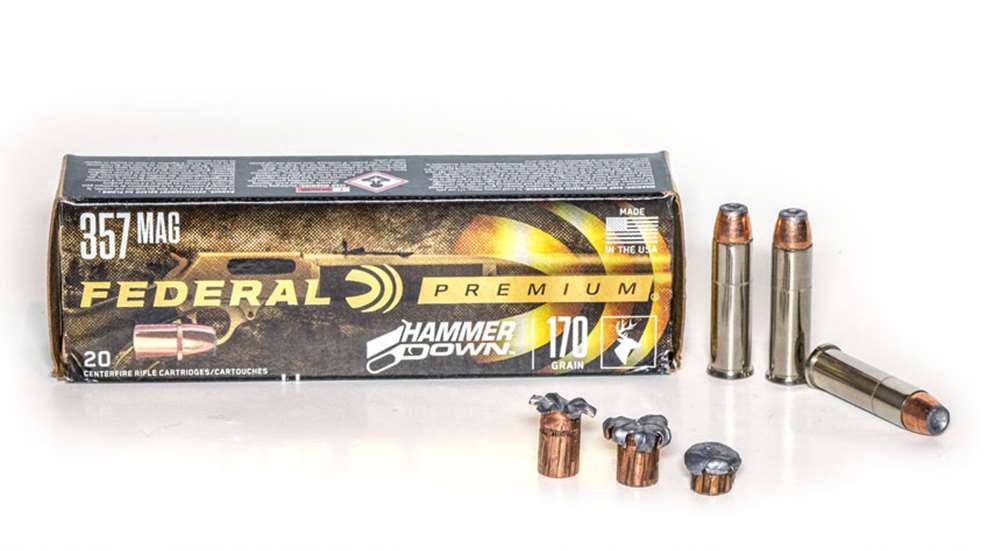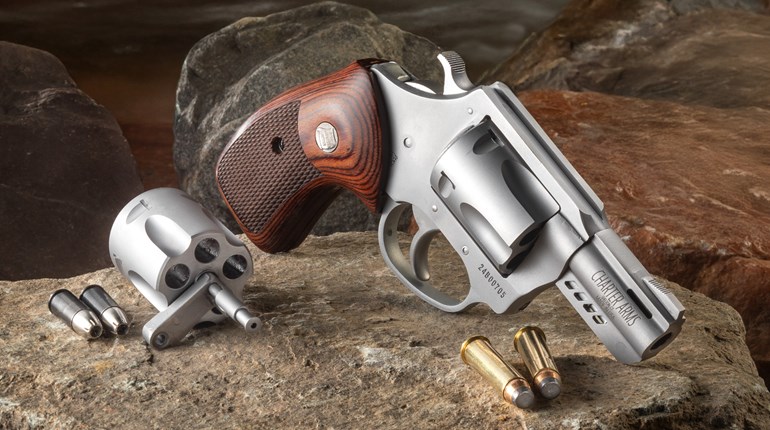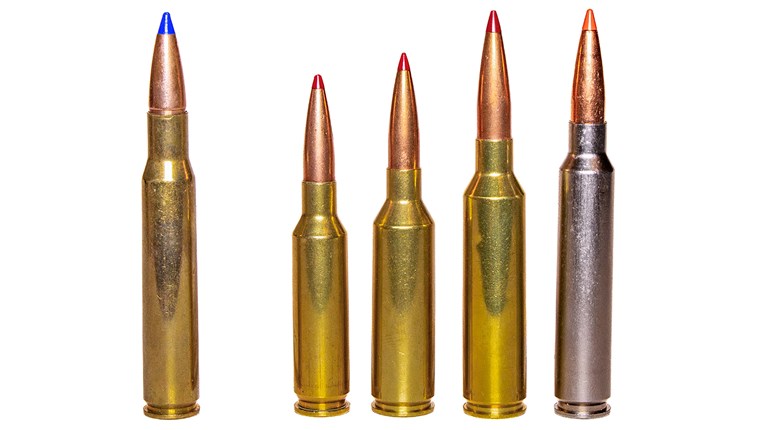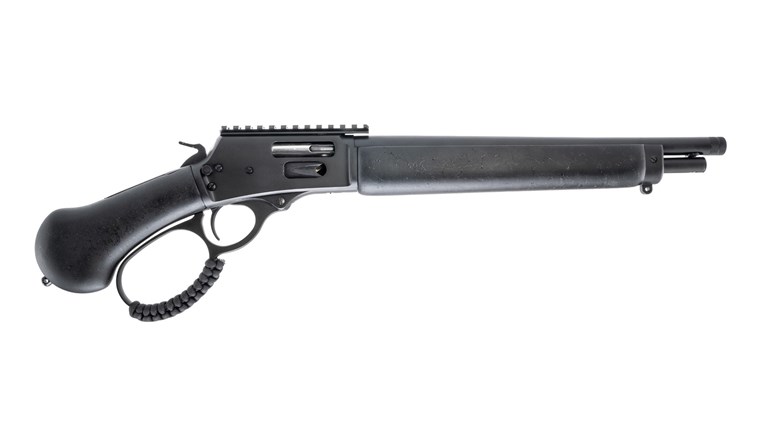
Finding a single load for the .357 Mag. that will deliver adequate terminal performance out of a handgun and a rifle is nearly impossible, but the new Federal HammerDown load can get it done.
Modern-day shooters typically consider a cartridge as either for a rifle or a pistol. But, it has not always been that way. During the dawn of the metallic-cartridge era, there was a lot of crossover. Most all of the cartridges popular in early revolvers, like the .32-20 Win., .38-40 Win. and .44-40 Win. were also quite popular in lever-action rifles. At that time the ammunition worked well in both; velocities were—at least by modern standards—slow and common, lead bullets were sufficient.
As the velocities of metallic cartridges increased and as rifle cartridges become significantly more powerful than handgun cartridges, things begin to change. If a shooter wanted a rifle, they generally wanted a rifle cartridge that would drastically extend the reach and hit harder than a handgun. Still, some revolver cartridges continued to be popular in rifles. With modern munitions, however, a popular revolver cartridge like the .357 Mag.—delivering about 1,200 to 1,400 fps out of a 4-inch revolver—will push the same bullet as much as 400 fps or faster out of a 16- or 18-inch-barrel rifle.
This created a problem for bullets. Modern projectile technology would allow ballistic engineers to create a bullet for .357 Mag. that could perform quite well at handgun or rifle velocities. What was challenging was to create something that would deliver expansion, maintain its weight and deliver decent penetration when fired from a short-barreled handgun as well as a rifle. You see, velocity is the driving force behind terminal performance, and bullets are typically designed to work within a certain velocity range. Extending that performance range so acceptable terminal performance can be had at impact velocities as low as 1,000 fps and as high as 1,800 fps has, at least until now, been similar to the search for Bigfoot.
I found myself trying to solve this conundrum of ammunition selection when I began working with a Ruger 77/357 bolt-action rifle I wanted to set up as a general-purpose rifle and as my companion to a concealed-carry and a general-purpose revolver. My goal was to find a single load with acceptable terminal performance that I could use in all three firearms. I started shooting various loads into test mediums and what I found was that there were a lot of loads that would work well out of the snubnose and the 4-inch revolver, but when they were fired out of the rifle, the bullets either disintegrated or lost their ability to carry a wide wound cavity deeply into a target.
After testing almost two dozen .357 Mag. loads, I’d settled on only two I felt could deliver effective terminal performance out of all three barrel lengths. The first was the 125-grain Barnes TAC-XP load. It provided classic mono-metal bullet expansion out of the 4-inch-barrel revolver, but when fired from the rifle all of the petals broke off the projectile. This allowed for good penetration, but the last three-quarters of the wound cavity was only slightly larger than caliber size. Out of the snubby, the bullet just barely opened up.
…Velocity is the driving force behind terminal performance, and bullets are typically designed to work within a certain velocity range.
The other load was one I tried out of desperation and it turned out to be (what I considered at the time) the best of what was tested. It was the 135-grain Hornady Critical Duty load. What I found to be the most amazing thing about this load was that the average penetration depths—when fired from the 2-, 4- and 18-inch barrels—were within a couple of inches. Penetration ranged from 13 to 17 inches. with impact velocities ranging between 1,113 and 1,542 fps. This was a bit on the slow side for a 135-grain, .357 Mag. load, which is probably why it managed to perform as well as it did out of all three firearms.
I’d pretty much settled on the Critical Duty load for all three of my .357 Mag. firearms, and then I received 100 rounds of a new .357 Mag. load from Federal. This new load is out of its HammerDown line, has been specifically engineered to work well with lever-action rifles and was intended to be a hunting load. It has chamfering on the case rim, which eases loading in lever-action side gates, and the nickel cases are resistant to corrosion. But, the heavy-for-caliber bonded bullet is what really sets this load apart.
Out of a snubnose revolver, the HammerDown load penetrated 15.5 inches and deformed with a frontal diameter 1.5X caliber. Out of the 4-inch revolver, the bullet penetrated 20 inches and across the front it measured 1.6X the unfired bullet diameter. And, out of the 18-inch barrel of the rifle, the 170-grain bonded bullet pushed to 22 inches and had a recovered frontal diameter that measuring 1.3X its original diameter. Unlike Critical Duty, which only showed a 400 fps (38 percent) velocity increase between the 2- and 18-inch barrels, the HammerDown load jumped from 1,102 fps out of the snubby to 1,773 fps out of the rifle, a 61-percent increase in velocity.
The point of all this is that if you’re a fan of the .357 Mag., and if you would like a single load suitable for hunting, predator defense and personal protection—a general-purpose or Bigfoot-capable load—you now have a fantastic option. If the best balance of terminal performance out of .357 Mag. revolvers and rifles is what you desire, I believe the new HammerDown load from Federal is the best option currently available.
I will say this though: The 170-grain HammerDown load fired out of a 17-ounce Ruger LCR with a 1.87-inch barrel is just about all you want to wrap your hand around. At best, the recoil would be described as uncomfortable, and a more honest description of the sensation would be painful.






































